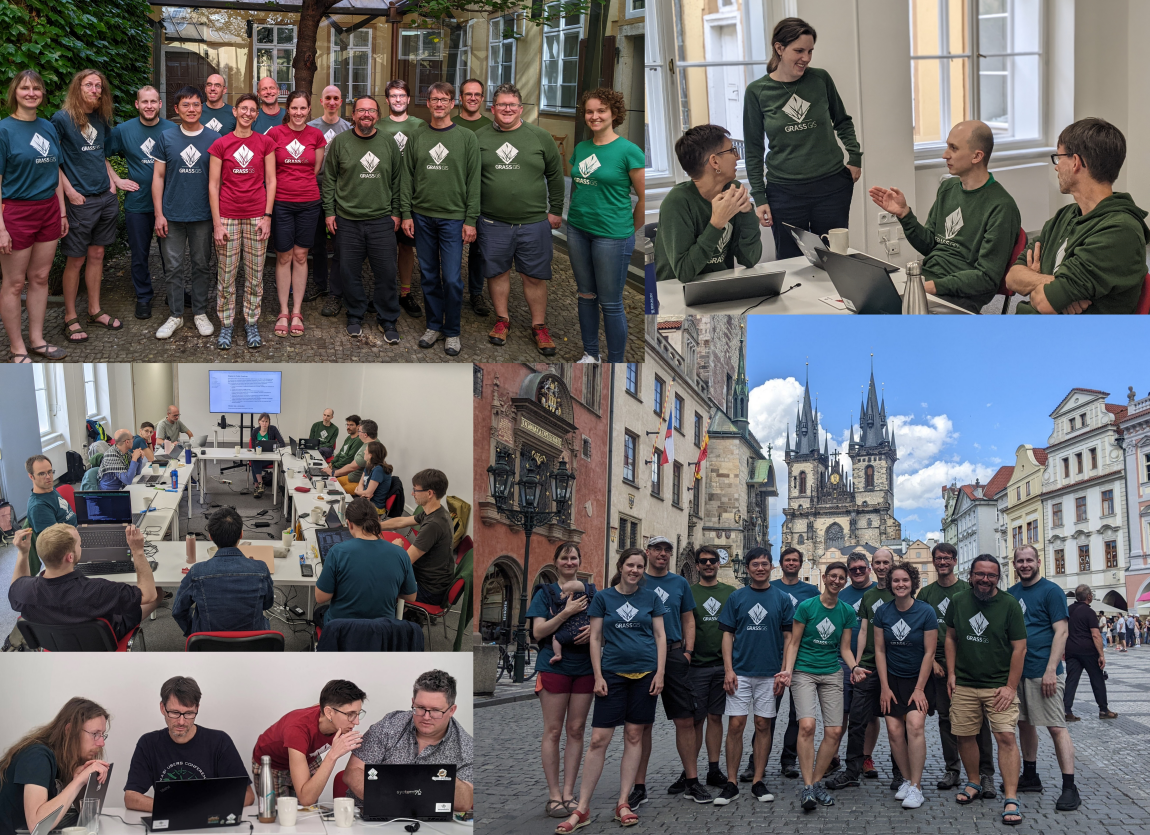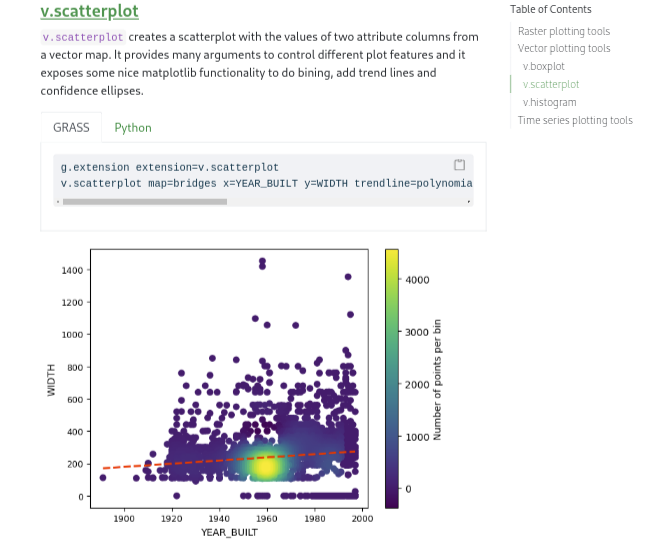Growing GRASS GIS with NSF Support: Progress and Next Steps
In 2023, our team of researchers from four U.S. universities announced a two-year project with support from an NSF grant (award 2303651). This project aims to modernize and expand the GRASS GIS platform, strengthen its role as a key geospatial processing engine, and build a diverse, vibrant global community of users and developers. We are excited to share the progress we have made so far toward these goals in the first half of the project.
Growing the GRASS community

A core part of our mission is to build a diverse community around GRASS GIS. We have launched several initiatives to grow the user and contributor base:
Mentoring activities: We’ve established a mentoring program for developers and researchers, helping them integrate GRASS GIS into their workflows or gain the skills needed to contribute to and innovate within the GRASS GIS ecosystem. Mentees typically come from academia and US federal agencies. We also provided mentoring for the GRASS Student Grant program awardee and GSoC participants.
Workshops and presentations: Through talks and workshops at conferences such as FOSS4GNA, FOSS4G Asia, FOSS4G Europe, useR!, and AGU, we introduced new audiences to GRASS GIS and introduced a new image of GRASS GIS. GRASS GIS was also featured in courses for advanced audiences: coastal dynamics workshop for Community Surface Dynamic Modeling System (CSDMS) community lead by Caitlin Haedrich, Geocomputation & Machine Learning for Environmental Applications course, and GEO-OPEN-HACK-2024 big geospatial data hackathon lead by Giuseppe Amatulli.
Community meeting: We organized a GRASS GIS Community Meeting that brought together users, supporters, contributors, power users and developers to collaborate and chart the future of the project.
Documentation

Comprehensive and up-to-date documentation is one of the priorities of this project.
Tutorials: Veronica Andreo and others developed new, modern-looking tutorials for GRASS beginners, data scientists, and researchers, that will be available soon on a platform powered by Quarto. We encourage the community to contribute tutorials from their discipline to cover a wide range of topics. Alongside the tutorials, we are also developing localized datasets.
Contributor onboarding: Onboarding contributors, developers and maintainers got easier thanks to the new Programming Style Guide. Contributing to GRASS addons is now easier too, with a Cookiecutter-powered addon template.
Software infrastructure improvements
A key focus of the grant has been to modernize and improve the GRASS GIS software infrastructure.
Code quality: Together with other contributors, we have addressed many code quality and security issues in Python, C and C++ code that were reported by Flake8, Coverity Scan, and Cppcheck. Resolving these issues will enable us to apply more strict automated checks on new code contributions, resulting in easier maintenance and high quality code. Several reviewers, not supported by the NSF POSE project, played crucial roles in reviewing the pull requests. Given GRASS’s large code base, this work will continue into the year ahead to tackle as many issues as we can.
Distribution: Thanks to the efforts of Huidae Cho, his team and several GRASS community members, we are close to introducing CMake build. CMake, a modern system for building code, will simplify building GRASS GIS with other projects and will make build system maintenance easier. Recipe for conda, a popular package manager for Python and R, is also on the way, bringing easier distribution of GRASS GIS to researchers and data scientists.
Sustainability
As part of the NSF project, we are actively working to ensure the long-term sustainability of GRASS GIS, focusing on both community and financial aspects. Through our participation in the NSF POSE Innovation Corps program, an entrepreneurial training initiative focused on open-source ecosystems, our team lead by Corey White conducted over 70 interviews with geospatial professionals. These insights and other community discussions helped shape several actions, such as adopting a Code of Conduct, formalizing our governance model, developing a roadmap, and clarifying our relationship with OSGeo. To further support sustainability, we are also addressing ways to reduce the overall maintenance burden by streamlining workflows, automating repetitive tasks, and lowering the complexity of ongoing development. Additionally, we are documenting the current infrastructure and release procedures to ensure knowledge is shared broadly and not dependent on individual developers. These efforts aim to create a more sustainable and resilient future for GRASS GIS.
Looking ahead
We maintain a detailed overview of the project efforts on GRASS wiki. Over the second half of the project, we will:
- Organize a developer summit in Raleigh, North Carolina, May 19 - May 24, 2025.
- Continue engaging with a wider community through more workshops, presentations, and outreach events.
- Support contributions from new developers and scientists through mentorship and training opportunities.
- Modernize the GRASS build system and distribution through transitioning to CMake builds and finalizing a conda recipe.
- Improve documentation of tools through modern documentation infrastructure taking advantage of state-of-the-art static site generator making documentation more accessible and searchable.
We are grateful for the continued support of the NSF and the global GRASS GIS community. Special thanks to community members who are helping our team by reviewing PRs, development, improving documentation and tutorials!
Anna Petrasova (North Carolina State University),
Vaclav (Vashek) Petras (North Carolina State University)